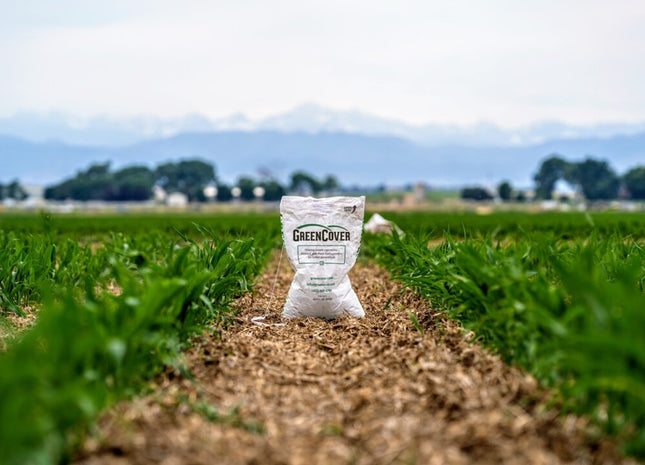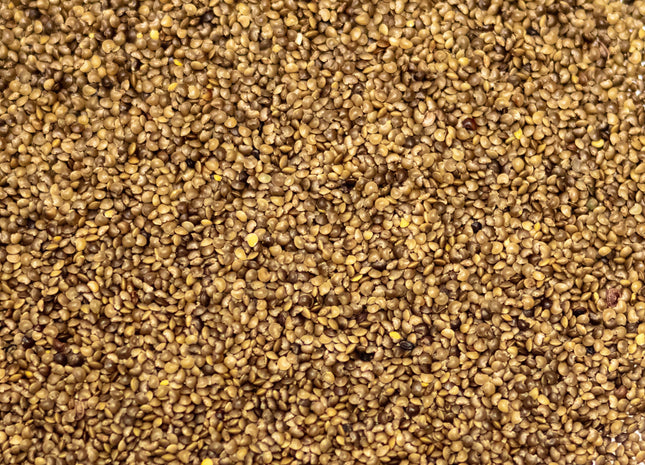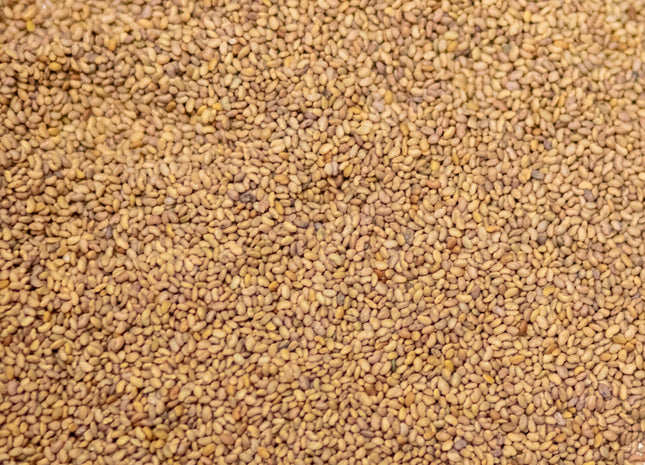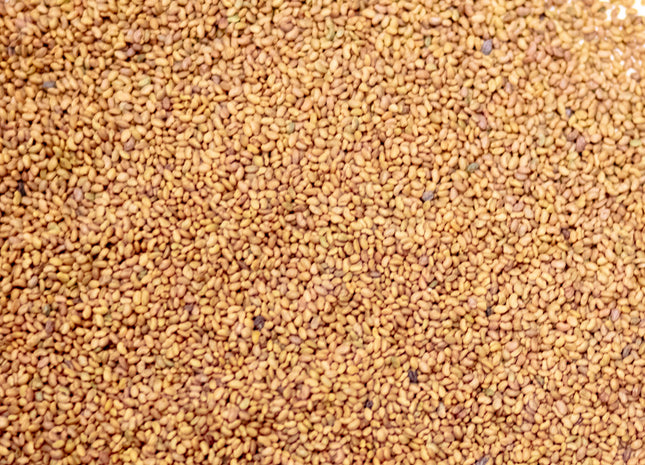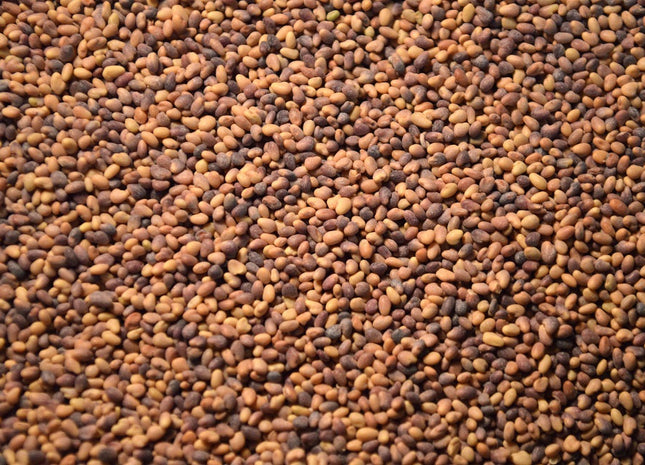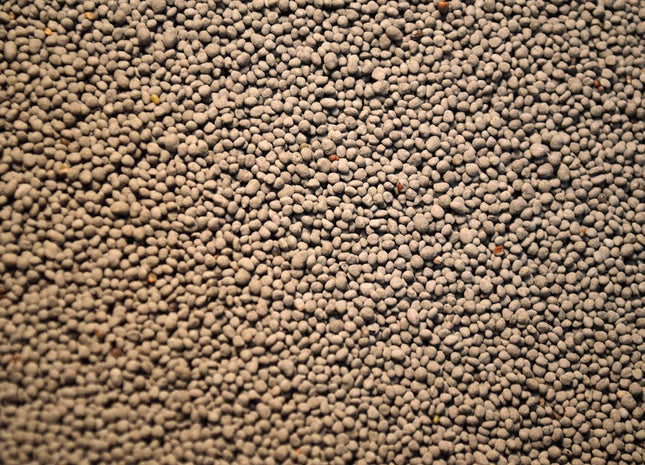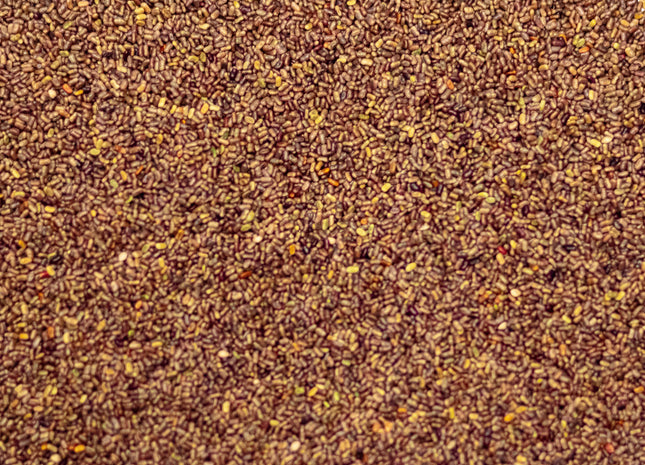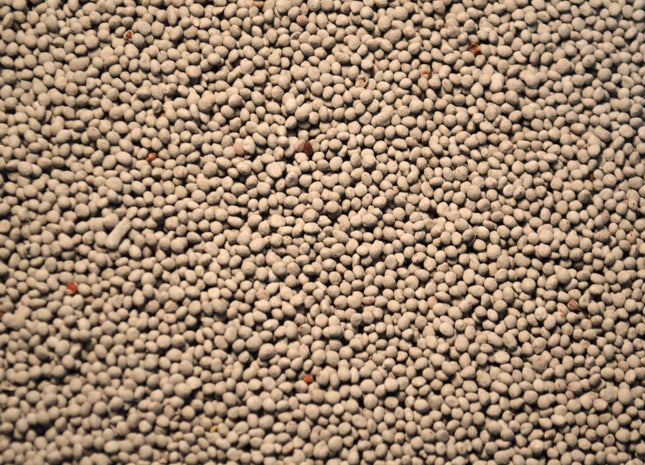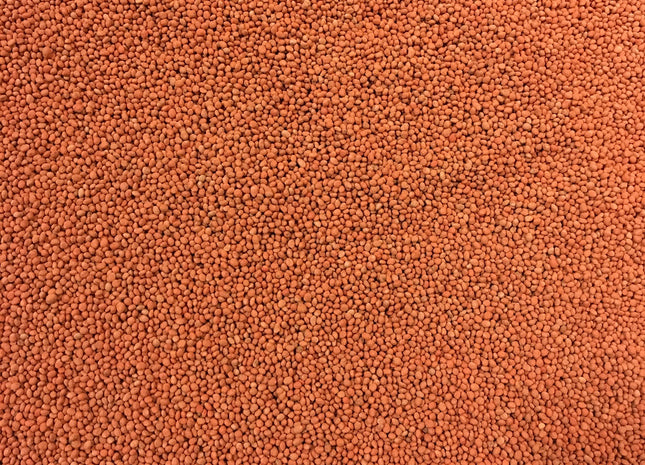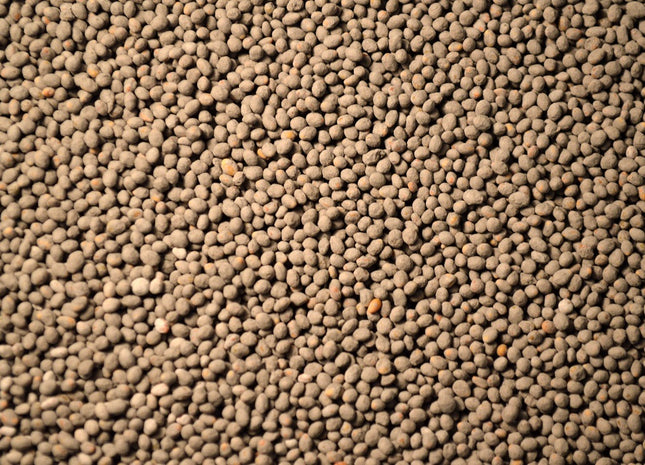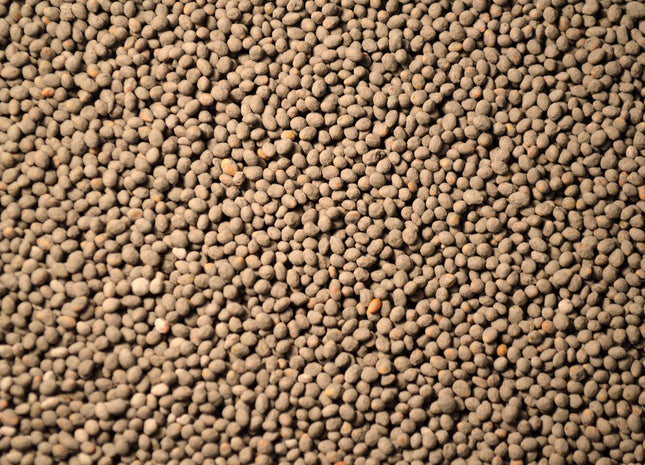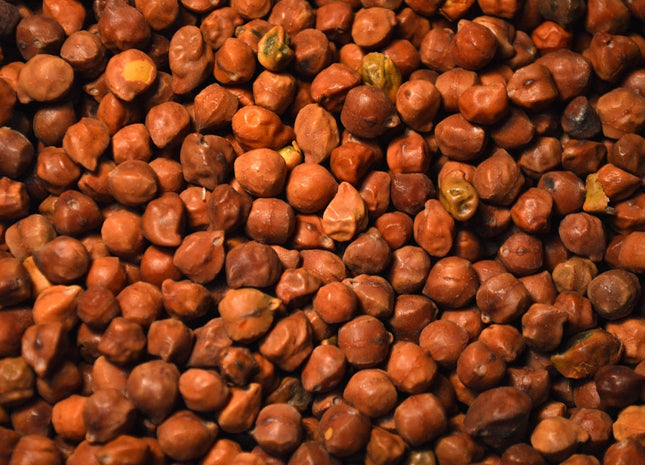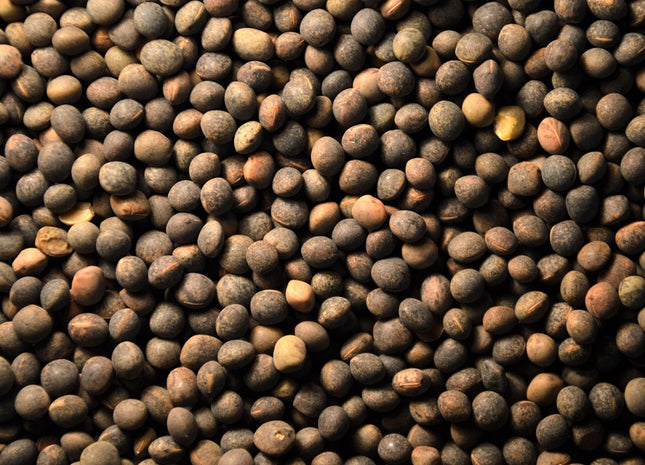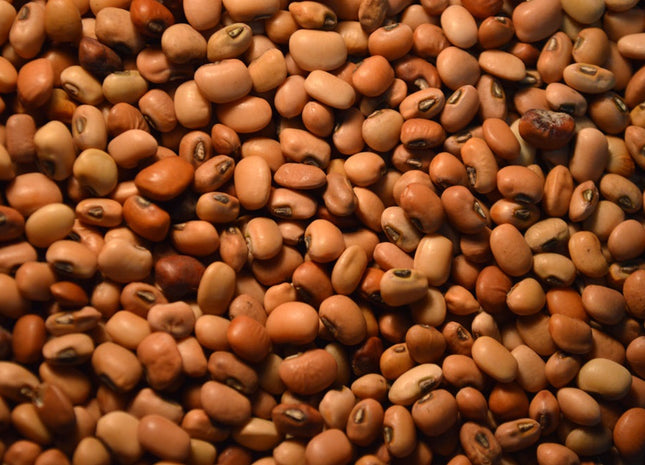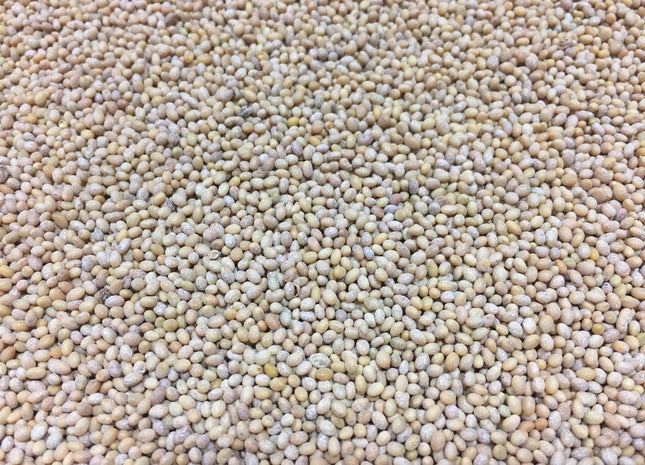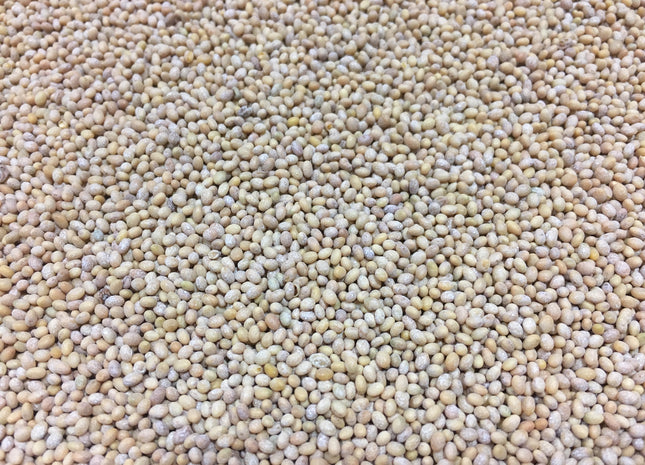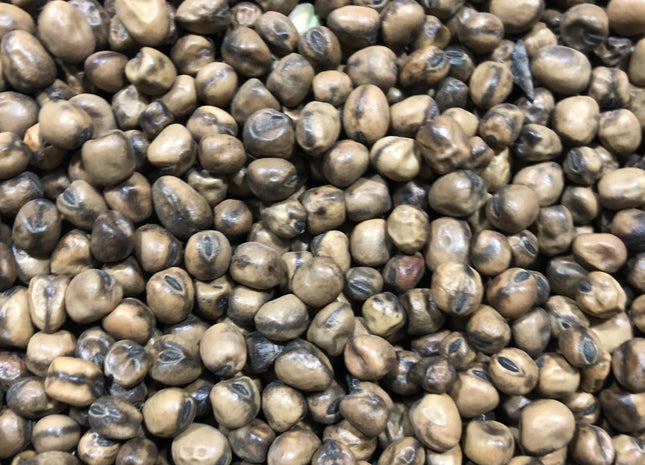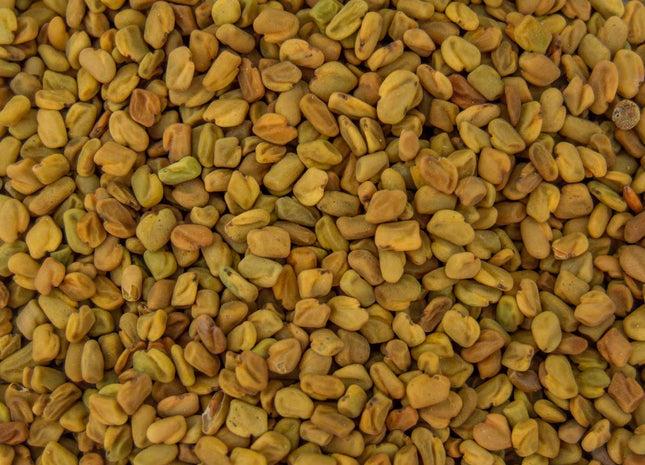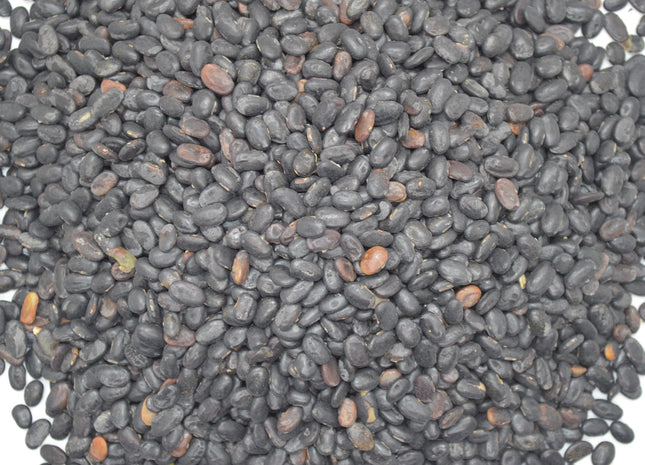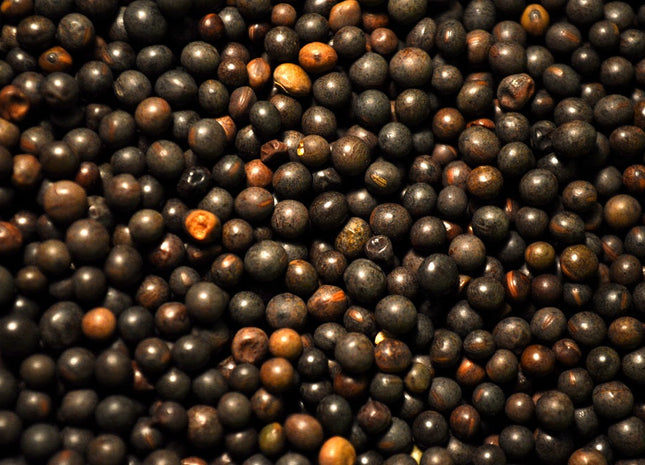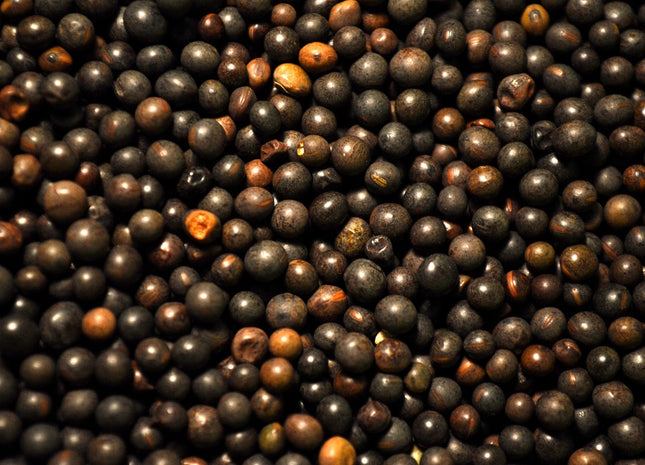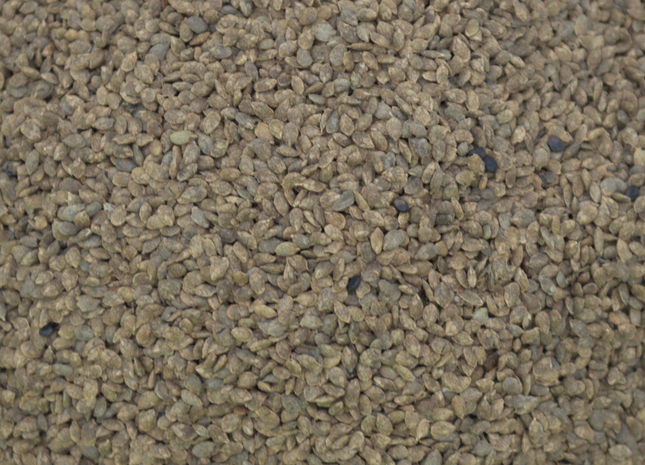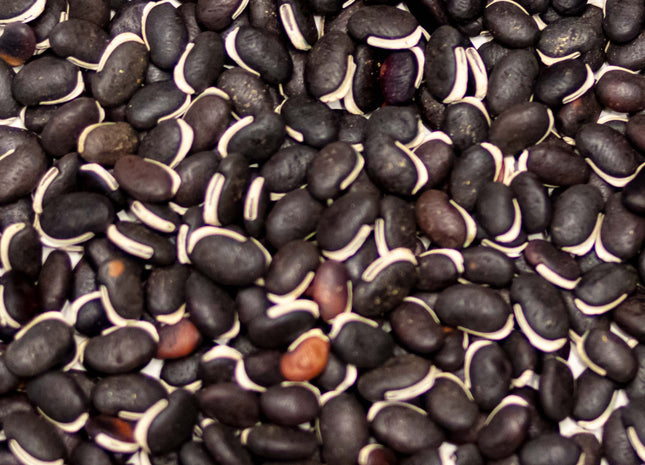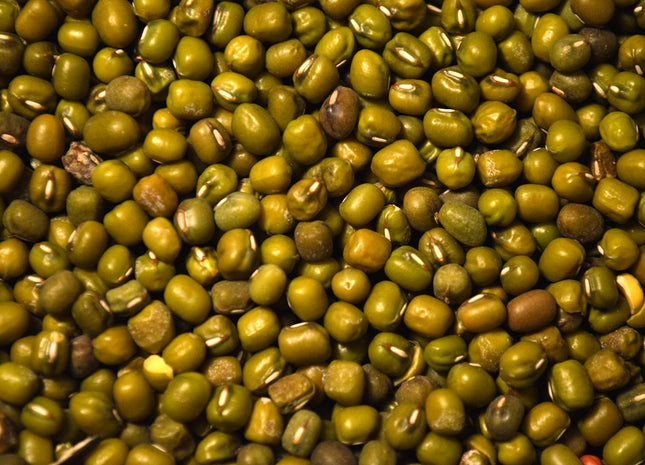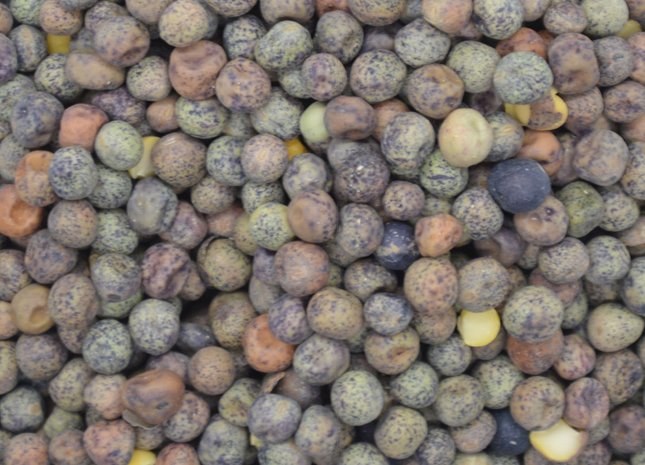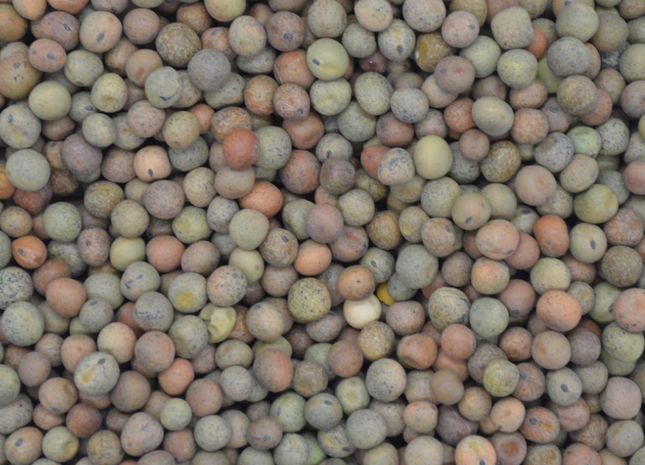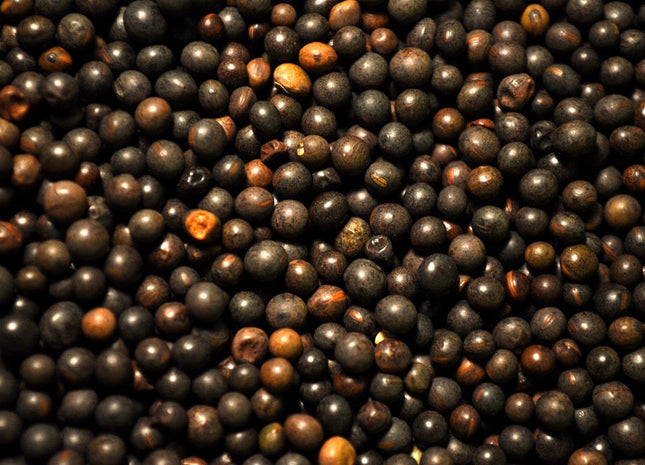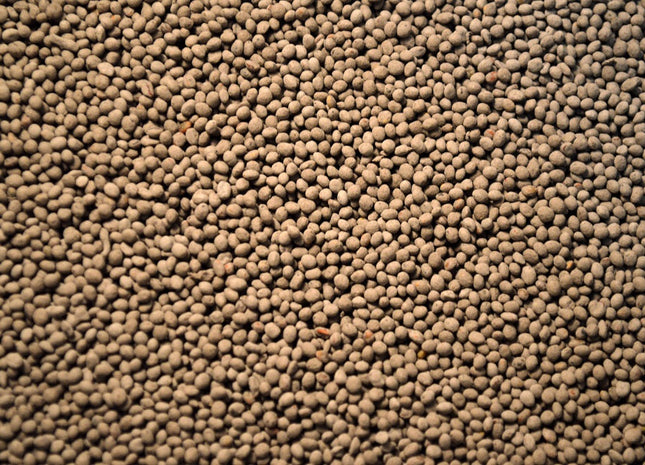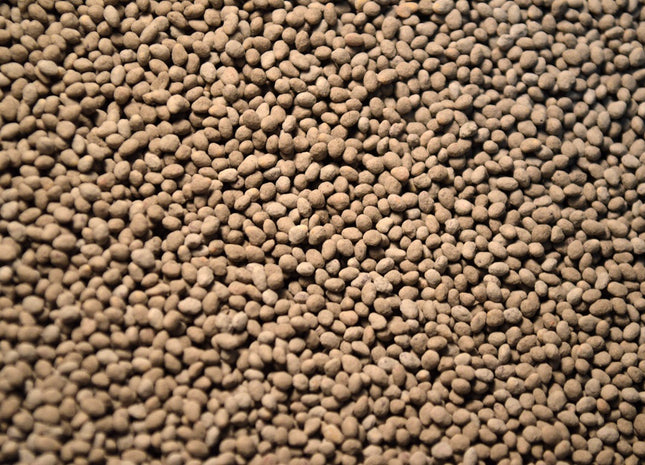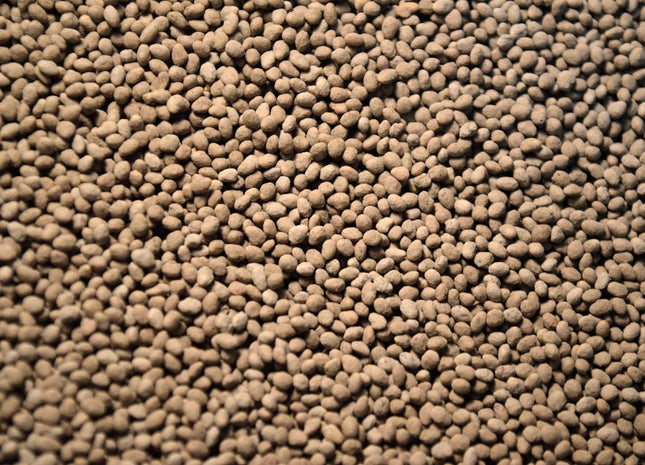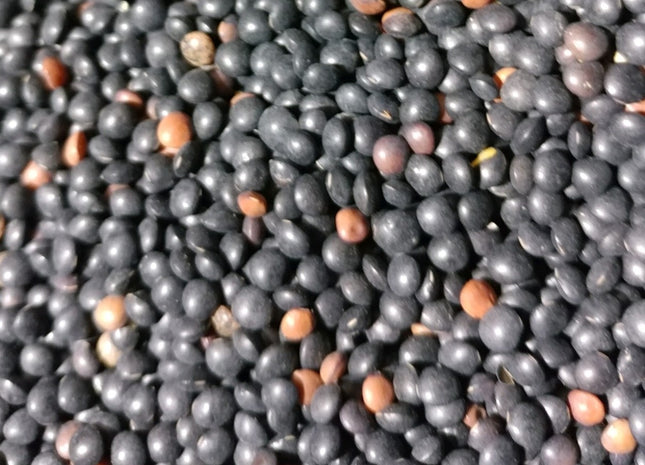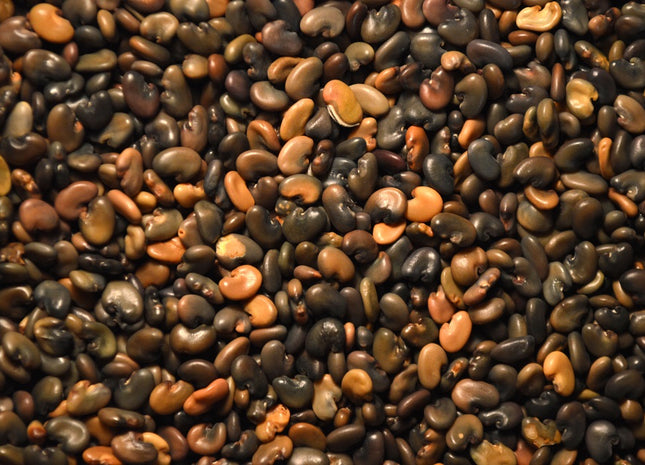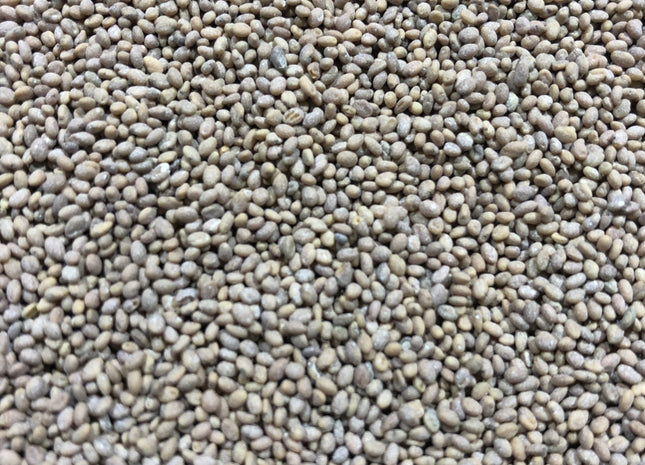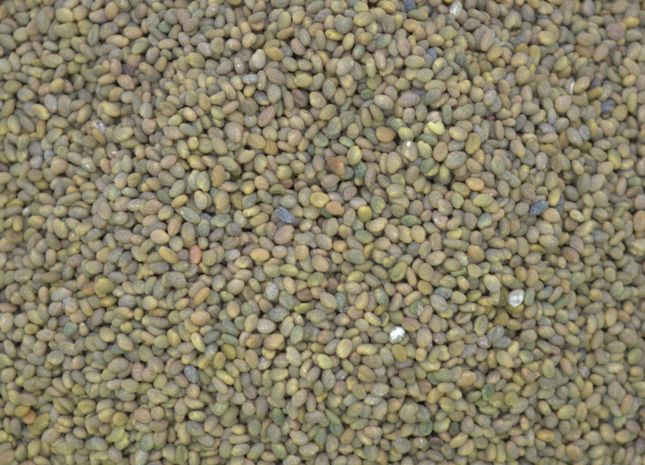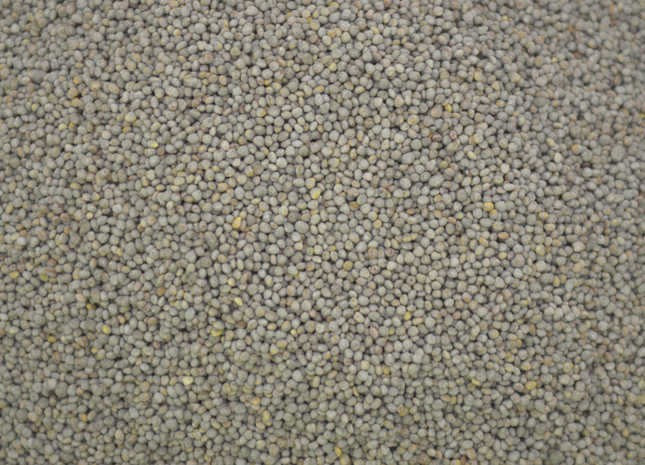Products

Aberlasting Kura/White Clover - OMRI Inoculated
Aberlasting clover is a cross between caucasian and white clover. The excellent and high quality forage from the white clover mixed with the persistence under extreme stress conditions from the caucasian clover make a very adaptable and hardy clover.
from $9.83 per lb

Aeschynomene (American Joint Vetch)
Aeschynomene, or American joint vetch, is a highly palatable warm season annual legume. Also known as deer vetch, joint vetch is particularly popular among food plot enthusiasts as it attracts wildlife such as whitetail, wild turkey, and bobwhite quail. American joint vetch not only provides excellent nutrition for large animals, but also excellent habitat for game birds. American joint vetch is an excellent way to add diversity to a mix and increase nitrogen fixing capabilities. This plant thrives in acidic, low fertility and wet soils and exhibits natural resistance to pest and disease.
from $7.55 per lb

Alfalfa (MVS 4220Q) - OMRI Inoculated
This improved alfalfa variety from Mountain View Seed is bred for superior performance in yield, persistence, and quality. 4220Q is an excellent option for alfalfa growers across the country with high resistance to stem nematode and spotted alfalfa aphid, as well as resistance to pea aphid. This variety has a fall dormancy rating of 4 and a winter hardiness rating of 2.
from $5.85 per lb

Alfalfa (MVS Majestic) - OMRI Inoculated
Majestic alfalfa is a Mountain View Seed variety bred for quality and yield. This is a great variety to use in areas with a hard pan and/or a high water table as it expresses branch root trait. The sunken crown makes it ideal for grazing situations and areas with harsh winters. Majestic comes with an excellent disease resistance package and is rated 1.5 for winter hardiness and 3.9 for fall dormancy.
from $5.85 per lb

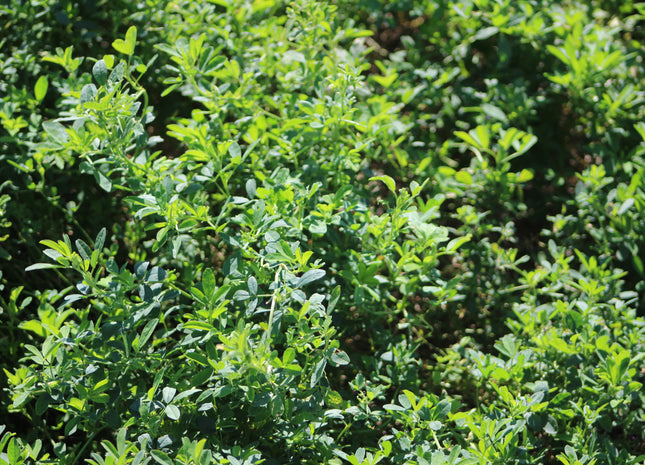
Alfalfa (Vernal) - OMRI Inoculated
Alfalfa is the most common and most productive perennial legume. It is usually used as a perennial monoculture for hay but at low rates and with good rotational grazing, alfalfa can also be used in pasture mixes to boost diversity and animal performance.
from $3.25 per lb

Alsike Clover - OMRI Inoculated
Alsike clover is a perennial that thrives in low lying ground. For pastures or meadows with poor drainage and occasional water logging, this would be the first clover to try. Growing 2-4 feet tall with pink flowers, this adds a pollinator attracting and nitrogen fixing species to perennial pasture mixes. It should be considered that alsike clover can be toxic to horses.
from $4.05 per lb

Alyce Clover
Alyce clover is an excellent option for livestock and wildlife alike. Highly palatable and high yielding, this plant provides excellent forage. Despite it's name, alyce clover is not a true clover, but rather a warm season legume. This is an excellent option for summer forage, added to a warm season grazing mix, or as a wildlife food plot.
from $5.05 per lb
- Out of Stock

Arrowleaf Clover (Yuchi) - OMRI Inoculated
Arrowleaf clover is a cool season, reseeding annual legume. It is a multipurpose plant that can be used for grazing, hay production, a wildlife food source, soil improvement and a winter cover crop. Forage quality is high, with digestibility generally superior to crimson clover at all stages of maturity. Deer and turkey readily feed on Arrowleaf clover.
from $3.25 per lb

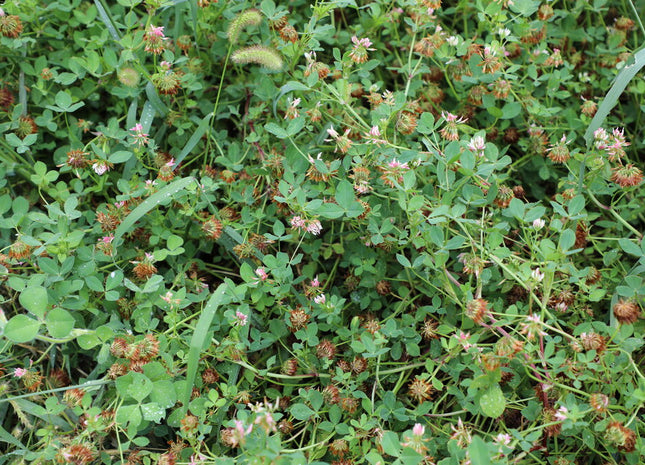
Balansa Clover (Fixation)- OMRI Inoculated
FIXation balansa clover is the most cold-tolerant annual clover, surviving temperatures as low as -15. Where it does overwinter, FIXation is capable of growing over 200 lbs of nitrogen biomass and it even has a hollow stem making it an option for roller crimping. This can also be used for a high yielding, high protein feed before transitioning to the next summer crop. To have the best chance at winter survivability, plant earlier than other overwintering species. For more information on FIXation balansa clover, visit https://fixationclover.com.
from $2.95 per lb

Berseem Clover (Balady) - OMRI Inoculated
Berseem clover produces a non-bloating, high quality forage, that's more palatable than alfalfa. Berseem forage has been observed to maintain a CP content of 28-30% throughout harvesting regiments, which is slightly higher than crimson clover or alfalfa. Berseem clover has low water requirements and can provide strong biomass recovery after being mowed. A rapidly, consistent stand can be achieved because germination can occur in just 7 days and minimal hard seed counts. This clover produces flowers which are self-sterile so reseeding is not a concern. These flowers do provide a great pollen source, which is highly sought after by honeybees. Berseem can be controlled easily with glyphosate or when planted in colder regions will winterkill. With good shade tolerance, this species can be utilized for interseeding into crop systems or forage mixtures.
from $2.35 per lb

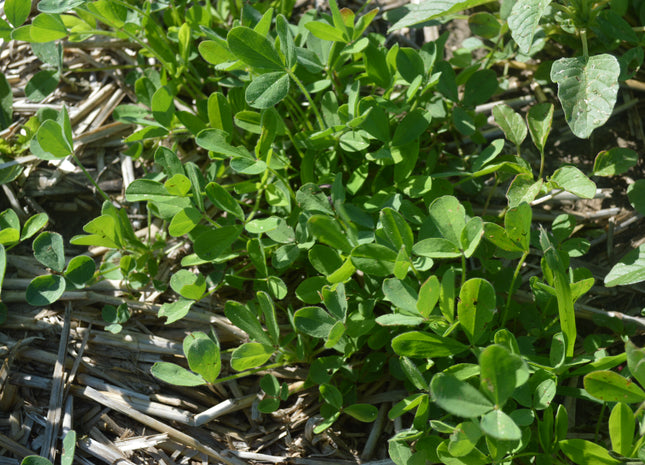
Berseem Clover (Frosty) - OMRI Inoculated
Berseem clover is a Mediterranean type that is salt tolerant, nitrogen fixing, and does well on light textured, sandy soils. Compared to other varieties of berseem clover, Frosty is later maturing, more cold tolerant, more productive, and has greater nutritional value. Frosty berseem clover can be overseeded into thinning stands of alfalfa as it looks very similar (before it blooms white) and it has excellent regrowth after cutting. For more information on Frosty berseem clover visit https://frostyclover.com.
from $3.85 per lb

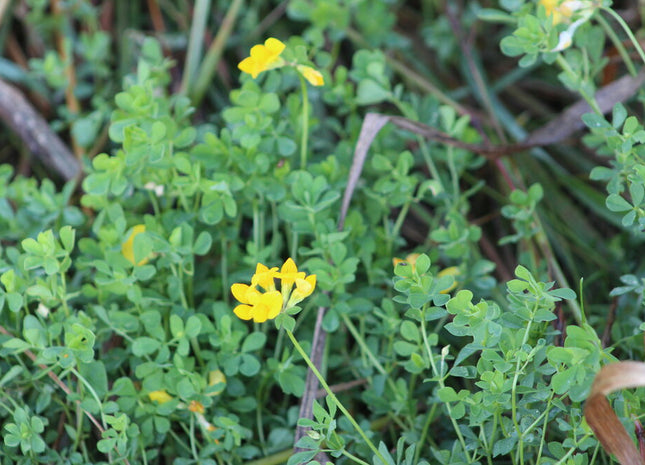
Birdsfoot Trefoil (VNS) - OMRI Inoculated
Birdsfoot Trefoil is a long lived perennial legume. This plant contains high levels of tannins, making it an excellent addition to pastures for grazing as there is no bloat risk that is common with other pasture legumes. The tannins also help neutralize the impact of grazing endophyte infected fescue. Birdsfoot Trefoil is not as productive when compared to alfalfa and is most commonly used in mixtures with other plants.
from $7.40 per lb

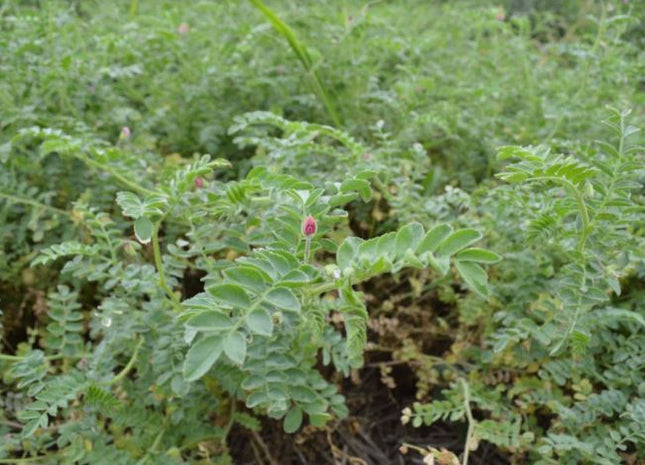
Chickpeas (Desi)
As the most heat tolerant of the cool season legumes, chickpeas offer a versatility that can be used in both warm and cool season mixes. Though not a great biomass producer, chickpeas are very drought tolerant and can help cover the ground in the midst of a summer drought. This taprooted plant can be used with grasses to add diversity and help break up compaction. As a legume, chickpeas will also fix nitrogen into the soil. Desi chickpeas have a smaller seed size so they blend well in a cover crop mix.
from $0.80 per lb

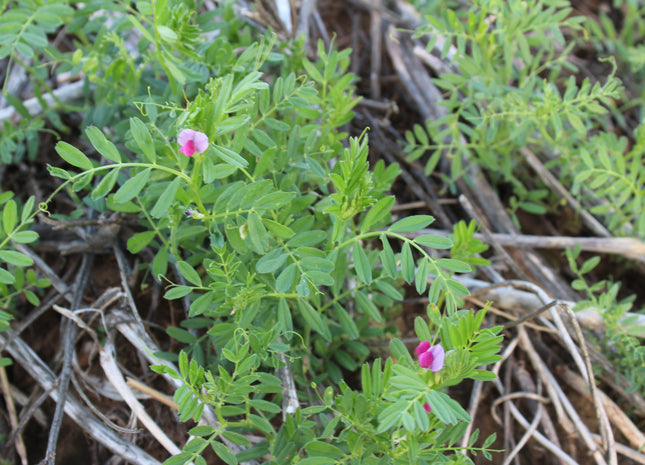
Common Vetch
Common vetch is a valuable cover crop widely used in the industry. As a leguminous plant, it provides nitrogen fixation, improving soil fertility. The extensive root system prevents erosion and helps control weeds. It enhances soil quality by adding organic matter, supports crop rotation systems, and provides early-season ground cover. Additionally, it can serve as a habitat for wildlife and, in some cases, offer forage for livestock. Common vetch's cold tolerance makes it suitable for various climates, but it is not nearly as cold tolerant as hairy vetch.
from $1.75 per lb

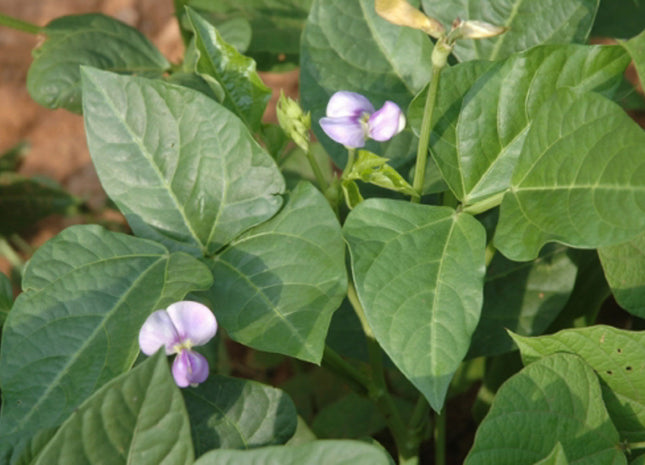
Cowpeas (Iron & Clay)
Cowpeas are one of the most popular warm season legumes. They love the heat, they tolerate drought, and they offer nitrogen fixation in a soil building mix, or higher protein in an annual grazing mix. The Iron & Clay have a long maturity which means when they are planted at the beginning of summer, they can achieve a lot of growth before temperatures cool down into fall. These cowpeas are also very viny so they will climb on other plants if planted in a mix.
from $1.21 per lb

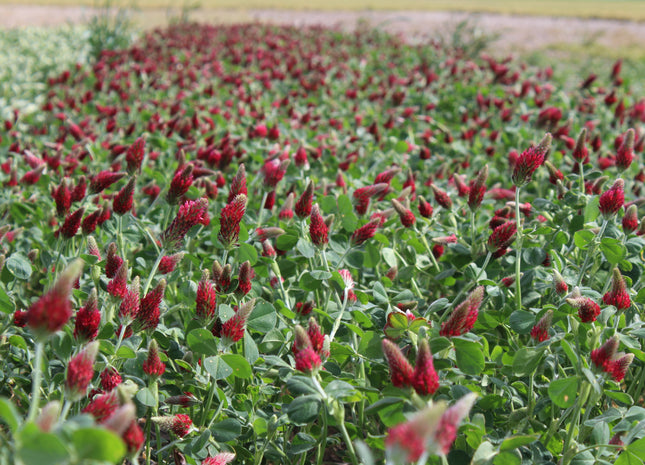
Crimson Clover (Dixie) - OMRI Inoculated
Crimson clover is one of the fastest growing, fastest establishing clovers. Known for its beautiful, deep red, cone shaped bloom, crimson clover is one of the most aesthetically pleasing cover crops and a popular choice for pollinator insects. For a more cold tolerant and higher biomass version, consider Kentucky Pride crimson clover.
from $1.26 per lb

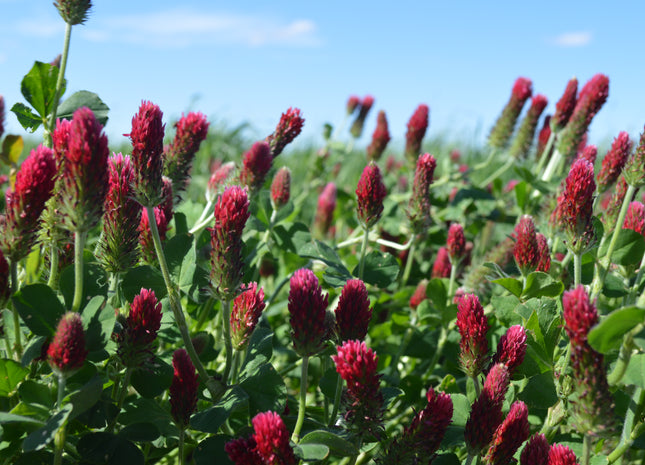
Crimson Clover (Kentucky Pride) - OMRI Inoculated
Kentucky Pride is an improved variety of crimson clover selected for more cold tolerance and more production (taller, deeper roots, more basal leaves and more tillering) than varieties like Dixie. Kentucky Pride crimson clover is a very fast establishing clover.
from $1.36 per lb

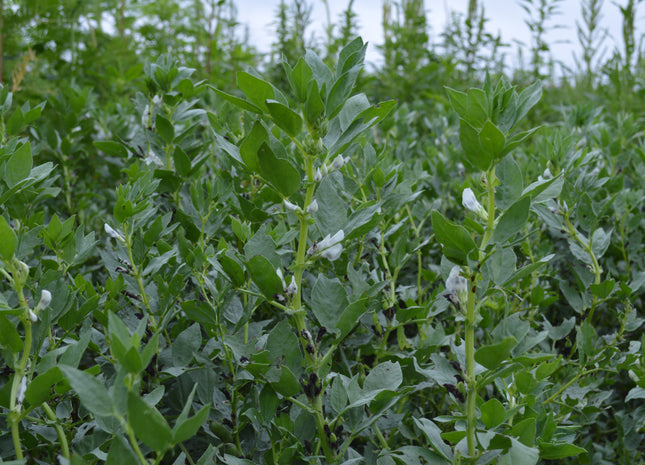
Faba Bean
Faba beans are one of the oldest plants under cultivation, having been grown in ancient Greece and Rome. Unlike other beans, they can tolerate cool, wet soils. While they may not overwinter in much of the US, they can survive a light frost which is advantageous if planted in a fall or spring mix. As a legume, these beans will fix nitrogen in the soil for other plants to use. Their tremendous root system will help break compaction and hold soil in place. Faba beans do not like heat and when the plants die they turn black.
from $0.85 per lb

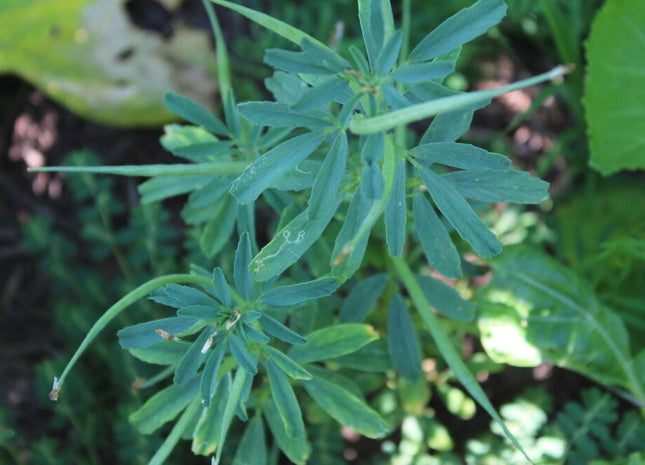
Fenugreek - OMRI Inoculated
The name Fenugreek literally means "Greek Hay" and is used across the globe as a highly productive forage for livestock. Fenugreek is commonly used in pastures and haying situations due to it's livestock health benefits including promoting reproductive and digestive health. In fact, some of the top soil scientists in the world recommend adding fenugreek to every livestock diet. This plant looks similar to clover with flowers resembling common peas. As a warm season plant, fenugreek loves sunlight and heat and makes a great addition to any warm season mix for its grazing and nitrogen-fixing characteristics. *Please note this is NOT food grade seed and is NOT recommended for human consumption.
from $1.89 per lb

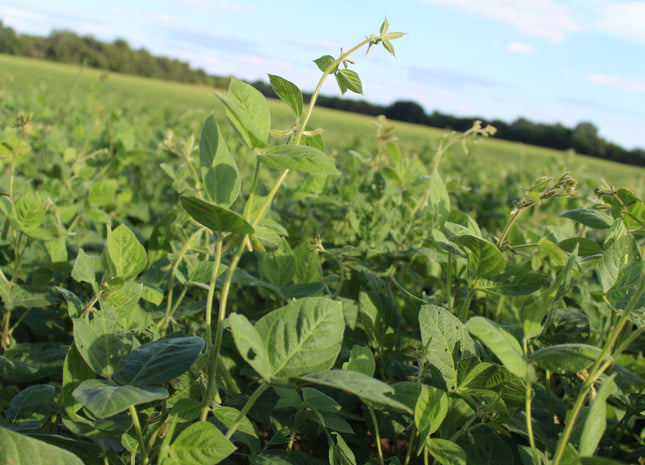
Forage Soybeans (Laredo)
Laredo Soybeans are an older soybean variety that is distinguishable from most other soybean varieties since the seed is black in color. This non-GMO forage soybean is an excellent addition to grazing and haying mixes. If you already use soybeans in your rotation, however, we recommend staying away from the forage soybeans as they can carry disease that could affect your soybean crop.
from $1.60 per lb

Hairy Vetch (MT)
Hairy vetch is one of the most winter hardy legumes. Being more winter hardy than common vetch, hairy vetch has the potential to withstand temperatures as low as -20F. This species is known to have a great rooting system, with a tap root that will extend 1 to 3 feet into the soil profile. This taproot will allow the vetch to thrive even in dry conditions. When hairy vetch is placed into a mix, it can help bring the C:N ratio of the mixture down. This reduces the risk of nitrogen immobilization for the next crop.
from $2.54 per lb

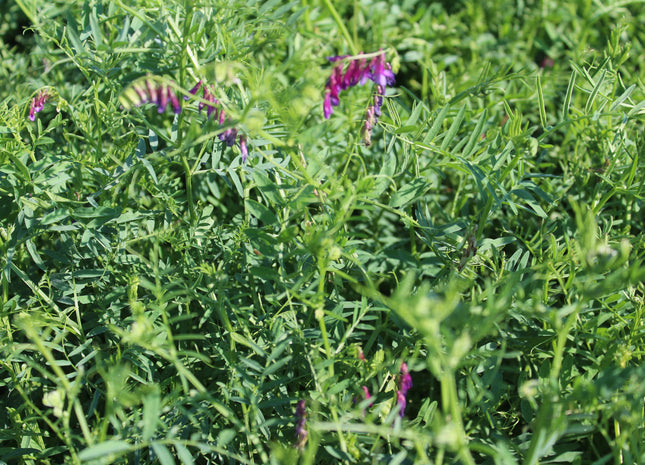
Hairy Vetch (Winter Warrior)
Hairy vetch is the most cold tolerant winter annual legume. Tolerating temperatures as low as -30 degrees, this is best planted before the first frost in the fall and then it will resume growth in the spring. Winter Warrior in particular is extremely cold tolerant because the seed is grown in places like Canada, Montana and South Dakota where it needs to survive some of the harshest winters. This variety is also facultative meaning it can be planted in the spring and grow to full maturity without having to go through a winter vernalization period. Hairy vetch is slower to green up and has slower spring growth compared to cereal rye and wheat but once it does get going, it grows very fast, doubling it’s growth each week through the month of May. With patience and a delayed corn planting, a full stand of vetch can consistently produce over 200 lbs of nitrogen in its biomass. As part of a winter cover crop or forage mix, vetch is commonly grown with rye or triticale.
from $2.54 per lb

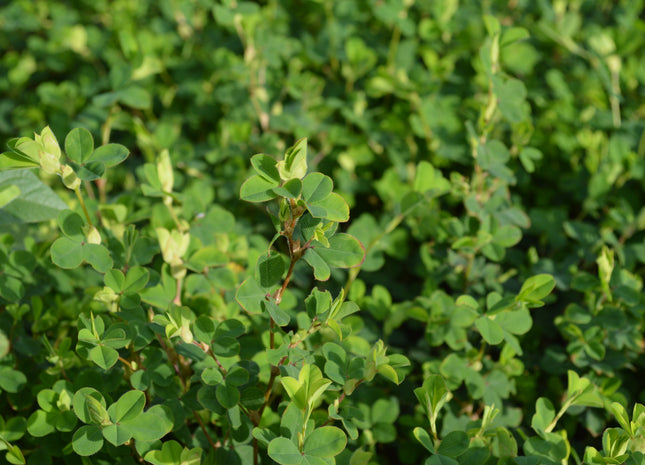
Korean Lespedeza
Korean lespedeza is a low growing, warm season, annual legume known for it's ability to tolerate acidic and low fertility soil. The plants do most of their growing in the months of July and August. Though not high yielding, Korean lespedeza is highly palatable and does not cause bloat. Korean lespedeza is small seeded and can be frost seeded or drilled into pastures in midwinter or early spring, emerging in summer. It can also be seeded into a growing wheat crop for a hay or pasture crop after wheat harvest.
from $2.05 per lb

Lab Lab (Highworth)
Lab lab is a highly palatable warm season legume native to Africa and Asia. It loves hot and dry conditions and is generally used as forage for livestock or in a food plot situation. Lab lab looks similar to a soybean plant, but generally grows taller and can be quite dense due to it's vining growth pattern.
from $2.35 per lb

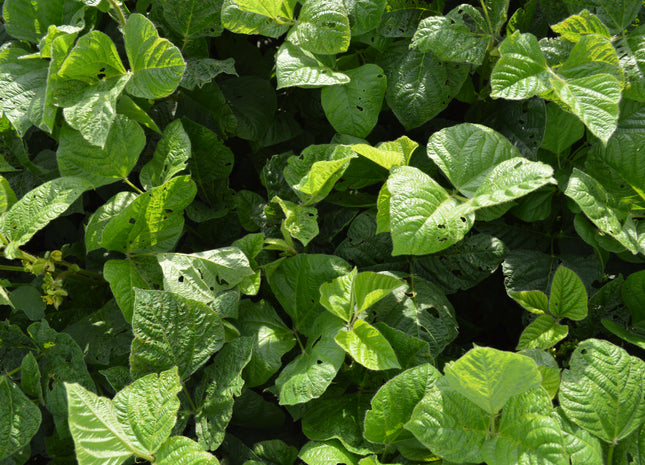
Mung Beans
Mung beans are a warm-season legume known for their remarkable heat tolerance and drought resistance. They exhibit rapid growth, maturing in just 65 days. One advantage of mung beans over cowpeas is that their seed pods remain intact, unlike cowpeas, making them an excellent source of late-fall protein for grazing livestock or wildlife. However, it's important to note that mung beans are highly susceptible to cold weather and require a minimum of 60 frost-free days to ensure successful growth. They can be used for both hay production and grazing and are compatible with peanut inoculant. Mung beans typically reach a height of around 3 feet and have a low to medium water usage. Their strengths lie in nitrogen fixation, forage production, and hay production.
from $1.45 per lb
- Out of Stock

Non-GMO Soybeans (KS5120NS)
These non-GMO soybeans are an excellent addition to a summer grazing crop, a post-small grain nitrogen fixing crop, or as a food plot for wildlife. It's a group 5 bean with indeterminate growth habit so the forage production potential is very high. This is a great, high protein forage for livestock.
from $1.00 per lb

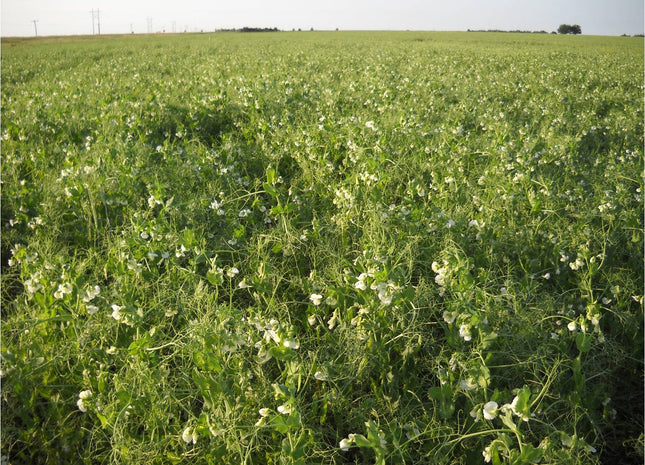
Organic 4010 Spring Forage Pea
Note: This products is certified organic. Spring peas are one of the fastest growing spring legumes. Planted in spring after the harshest winter cold has passed, spring peas will tolerate some light freezing. Peas are commonly planted with oats as a high quality spring feed either for hay or grazing or even a green manure.
from $0.80 per lb
- Out of Stock

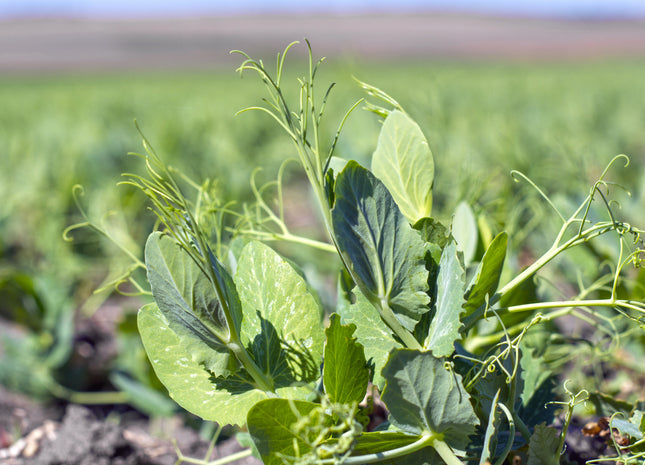
Organic Austrian Winter Peas
Note: This product is certified organic. Austrian winter peas are good companions to fall mixes, especially when combined with hairy vetch. If planted in early fall, there can be good growth for fall grazing as a protein source in the mix and they will grow much later into the fall than spring peas. In order to maximize winter survival chances, winter peas need to be planted relatively late (about the middle of wheat planting season) and deep, up to 3 inches. These conditions will help protect the growing point of the pea and assists in survival in colder climates.
from $1.00 per lb
- Out of Stock


Organic Crimson Clover
Note: This product is certified organic. Crimson Clover is one of the fastest growing, fastest establishing clovers. Known for its beautiful, deep red, cone shaped bloom, crimson clover is one of the most aesthetically pleasing cover crops and a popular choice for pollinator insects.
from $3.10 per lb

Organic Hairy Vetch VNS
Call for Availability This product is certified organic. Please note: this product has 5% cereal rye contamination. Hairy vetch is one of the most winter hardy legumes. Being more winter hardy than common vetch, hairy vetch has the potential to withstand temperatures in excess of 5F with no cover. This species is known to have a great rooting system, with a tap root that will extend 1 to 3 feet into the soil profile. This taproot will allow the vetch to thrive even in dry conditions. When hairy vetch is placed into a mix, it can help bring the C:N ratio of the mixture down. This reduces the risk of nitrogen immobilization for the next crop.
from $2.88 per lb

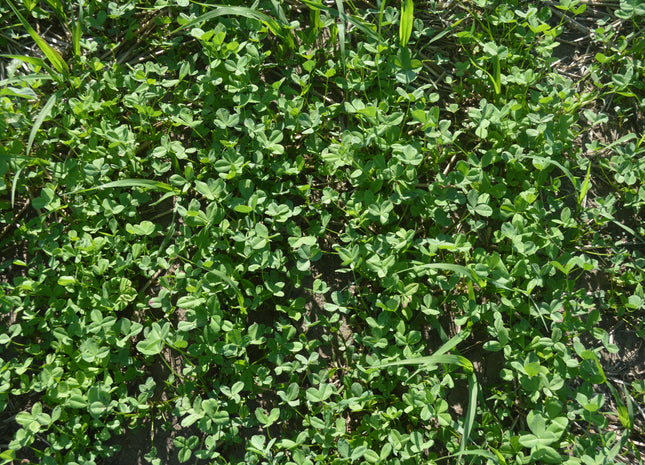
Persian Clover (eNhance) - OMRI Inoculated
Every aspect of this plant supports its reputation for excellent forage quality. Mature stems are soft, hollow and have thin structural plant cell walls, leading it to be more digestible than red clover or alfalfa. Some common forage tests boast CP 16-21% and IVDMD 63-78%. Not to mention, studies have shown persian clover to be more palatable than rape, alfalfa, fescue or perennial ryegrass. High productivity during March through April provides excellent regrowth potential following grazing or the ability to support two spring hay cuttings. Given the right circumstances, one could expect persian clover to naturally reseed and be redistributed by wind/water via its very mobile, light weight, seed pods. Spring flowers are also known to attract flower flies whose larva are a leading predator of aphids. Learn more about eNhance Persian Clover here.
from $3.05 per lb

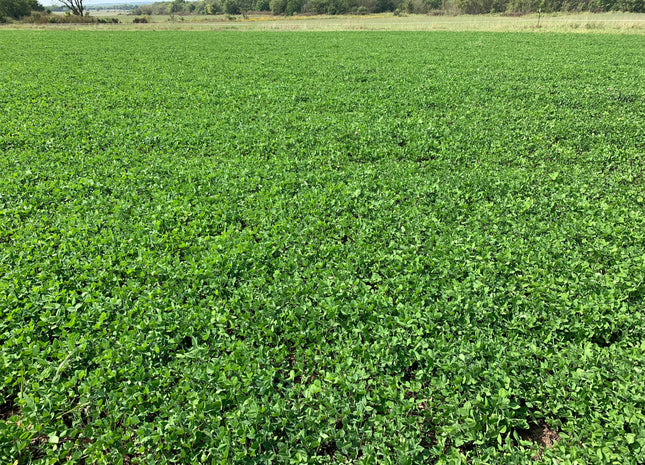
Red Clover (Blaze) - OMRI Inoculated
With similar forage yields, crude protein and better digestibility when compared to alfalfa, red clover can be an excellent forage alternative to add to your operation. You can harvest your first cutting 60-70 days after a spring seeding and on every 30-35 day intervals after initial harvest. With its vigorous spring growth, this clover has the capability of suppressing weeds. Red clover is less invasive than white clover because of its shorter life span and the lack of rhizome or stolon rooting structures. It's deep taproot can extend up to 3ft into the soil profile and finer rooting structure in the top 5" can really aid in breaking up compacted soils. Red clover flowers are known to attract many pollinator and beneficial insect species. If P leaching is a concern, red clover has been observed to leach only 1/3-1/5 the amount of P as ryegrass or radishes. Learn more about Blaze Red Clover here.
from $3.55 per lb

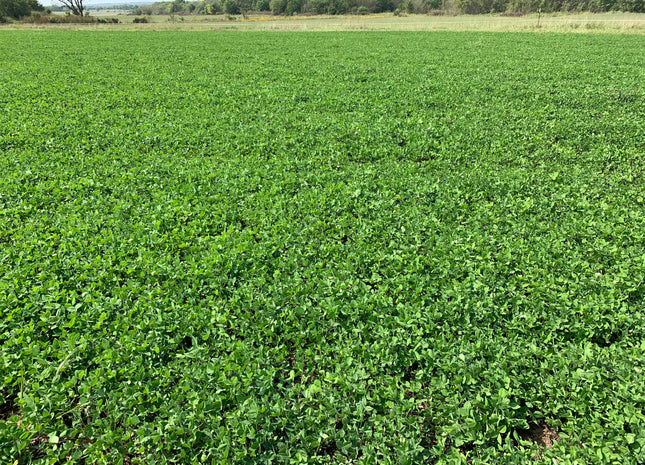
Red Clover (Medium) - OMRI Inoculated
With similar forage yields, crude protein and better digestibility when compared to alfalfa, red clover can be an excellent forage alternative to add to your operation. You can harvest your first cutting 60-70 days after a spring seeding and on every 30-35 day intervals after initial harvest. With its vigorous spring growth, this clover has the capability of suppressing weeds. Red clover is less invasive than white clover because of its shorter life span and the lack of rhizome or stolon rooting structures. It's deep taproot can extend up to 3ft into the soil profile and finer rooting structure in the top 5" can really aid in breaking up compacted soils. Red clover flowers are known to attract many pollinator and beneficial insect species. If P leaching is a concern, red clover has been observed to leach only 1/3-1/5 the amount of P as ryegrass or radishes.
from $3.00 per lb

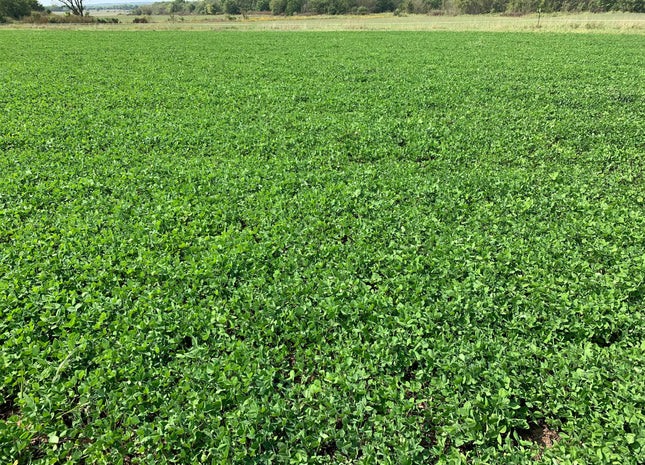
Red Clover (Q Medium) - OMRI Inoculated
With similar forage yields, crude protein and better digestibility when compared to alfalfa, red clover can be an excellent forage alternative to add to your operation. You can harvest your first cutting 60-70 days after a spring seeding and on every 30-35 day intervals after initial harvest. With its vigorous spring growth, this clover has the capability of suppressing weeds. Red clover is less invasive than white clover because of its shorter life span and the lack of rhizome or stolon rooting structures. It's deep taproot can extend up to 3ft into the soil profile and finer rooting structure in the top 5" can really aid in breaking up compacted soils. Red clover flowers are known to attract many pollinator and beneficial insect species. If P leaching is a concern, red clover has been observed to leach only 1/3-1/5 the amount of P as ryegrass or radishes.
from $3.55 per lb


Spring Forage Pea (4010 Non-GMO)
Spring peas are one of the fastest growing spring legumes. Planted in spring after the harshest winter cold has passed, spring peas will tolerate some light freezing. Peas are commonly planted with oats as a high quality spring feed either for hay or grazing, or even a green manure. Peas work well in a mix as they will climb other plants to access sunlight. These legumes will also contribute to nitrogen fixing.
from $0.55 per lb

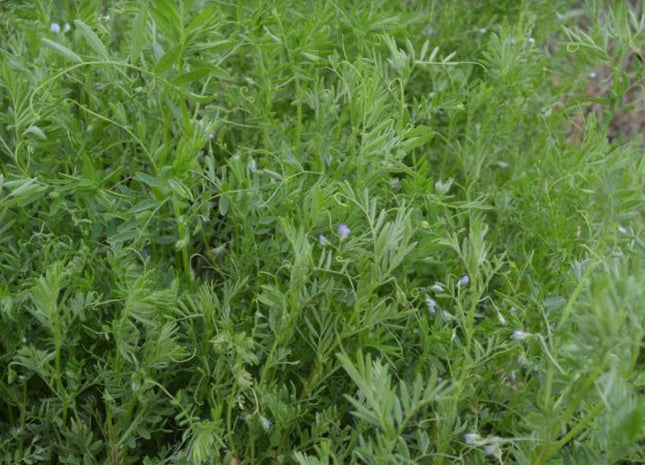
Spring Lentil (Crimson)
Lentils thrive in cool, dry conditions where they can remain relatively free of disease, hence they are commonly grown in the northern Great Plains. With a shallow rooting structure that doesn't have the ability to reach subsoil moisture, lentils are a great option in front of cereals or deep rooting crops. If excessive moisture is present during the growing season it will delay plant maturity. This will be excellent for producers who want to plant a summer fallow mixture where the mix can continue to grow under ideal conditions. Lentils are known for their ability to emerge through thick cereal stubble due to their strong seedling vigor. With rapid seed germination, seedlings generally out grow the threat of insects or disease pressure during establishment. Lentils can also house mycorrhizal fungi. Mature lentil straw can be an option for feed as it is much higher in crude protein, digestibility and palatability when compared to cereal straws.
from $1.90 per lb

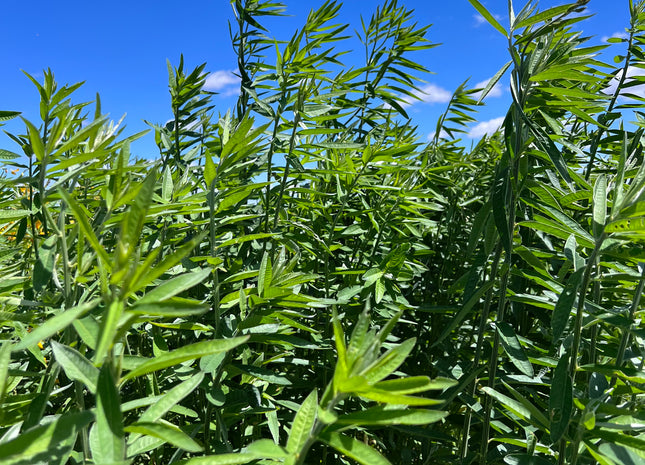
Sunn Hemp
Sunn hemp is an erect, tall growing warm-season legume with an anchoring tap root. Sunn hemp is a tropical plant so it thrives in the heat. It's deep taproot helps it access water and nutrients deep in the soil profile and works with bacteria to fix nitrogen. The leaves are high in protein for grazing and especially popular with small ruminants like sheep, goats, and deer, but cattle will also eat the leaves. It's long growing season also makes it a great addition to grazing mixes. Due to toxicity concerns we do NOT recommend grazing sunn hemp as a monoculture. The stalk is very lignified making this a poor species to use in a hay mix.
from $2.00 per lb

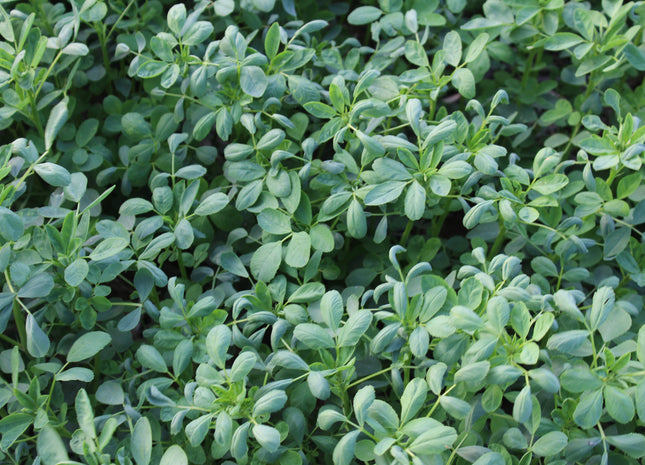
Sweet Clover (Hubam White) - OMRI Inoculated
Hubam White Sweet Clover can produce up to 9,000 lbs dry matter per acre over a summer after being oversown into a grain crop or direct seeded with a spring grain nurse crop. While its taproot is shorter and more slender than that of its biennial cousins, it still loosens subsoil compaction. Annual sweetclovers work best in the Deep South, from Texas to Georgia as they are not frost tolerant. There, they establish more quickly than the biennial types and produce more biomass in the seeding year in southern regions.
from $3.61 per lb

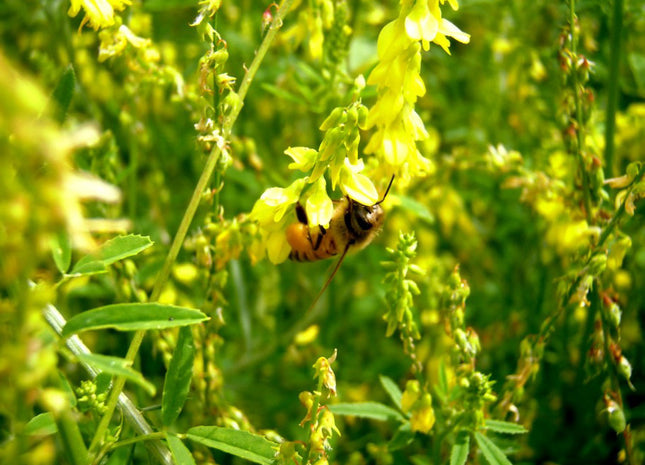
Sweet Clover (Yellow Blossom) - OMRI Inoculated
Yellow blossom sweet clover is not a true clover but is probably more closely related to alfalfa. Sweet clover leaves look much like alfalfa, but the margins of sweet clover leaflets are serrated around their entire edge whereas alfalfa is only serrated on the tip. It is typically a biennial, grows 2-6 feet high, and as the name implies, produces yellow flowers. When compared to the white flowering types of sweet clover yellow blossom blooms roughly 2 weeks earlier. It also matures earlier, usually grows less upright, possesses finer stems, and is less productive and less winter-hardy. However, yellow blossom sweet clover persists better in pastures and tolerate adverse conditions better than white varieties. In temperate climates with mild summers it can survive and thrive through a second year of production. Yellow blossom sweet clover adds lots of nitrogen and organic matter to a system.
from $3.75 per lb

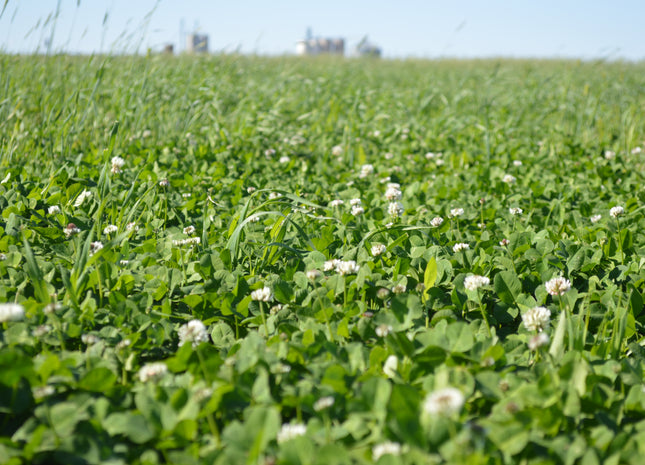
White Clover (Stamina Intermediate) - OMRI Inoculated
White Clover is an excellent choice for a perennial clover. The Stamina variety was developed to be more heat and drought tolerant than most other white clovers. Being a legume this plant can cause bloat, but rarely when it is in a mix with grasses. White clover is also a great choice for areas that have saturated soils.
from $6.05 per lb


Winter Peas (Austrian)
Austrian winter peas are good companions to fall mixes, especially when combined with hairy vetch. If planted in early fall, there can be good growth for fall grazing as a protein source in the mix and they will grow much later into the fall than spring peas. In order to maximize winter survival chances, winter peas need to be planted relatively late (about the middle of wheat planting season) and deep, up to 3 inches. These conditions will help protect the growing point of the pea and assists in survival in colder climates.
from $0.80 per lb

